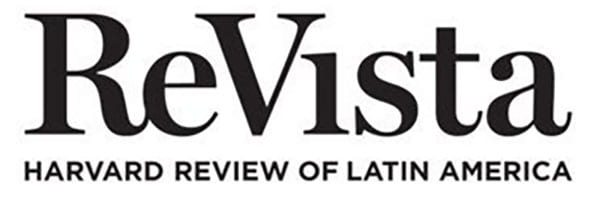Photoessay by Luís Figueroa
Ojos Propios
Cusco is a cosmopolitan, touristic, traditional city, linked to Catholic religiosity and ancestral Andean practices. It is home to a fervent syncretic cosmovision and a permanent spirituality, linked like any growing city to a galloping economy and an effervescent commerce.
However, this commercial impact highlights a marked imbalance between the social classes of those who have the most, visitors, entrepreneurs and the most needy. This raises the question of whether there is a labor inclusion plan in place, whether social security is universal and whether the economic, social and educational benefits generated from our taxes reach those who need them most.
1. Treasures of the Andes. Lady Begging at night outside a jewelry store.

Cusco. 2009. Photographer: Luis H. Figueroa Lozano-Álvarez
2. Get Cash! Boy seeking refuge at night at an ATM.

Cusco. 2006. Photographer: Luis H. Figueroa Lozano-Álvarez
3. Shark. Boy performing the shark pose in front of an armored truck.

Cusco. 2006. Photographer: Luis H. Figueroa Lozano-Álvarez
4. Imperial City. Ladies begging at the door of the Cusco Cathedral

Cusco. 2016. Photographer: Luis H. Figueroa Lozano-Álvarez
5. Lower Prices. Beggar at a store door.

2025. Photographer: Luis H. Figueroa Lozano-Álvarez
6. Mall. Beggar at the entrance to the Cusco Mall.

2025. Photographer: Luis H. Figueroa Lozano-Álvarez
7. Unlimited gigabytes. Beggar on El Sol Avenue.

2025. Photographer: Luis H. Figueroa Lozano-Álvarez
Fotoensayo de Luís Figueroa
Ojos Propios
Cusco es una ciudad cosmopolita, turística, tradicional, ligada a la religiosidad católica y a las prácticas ancestrales andinas. Hogar de una ferviente cosmovisión sincrética y de una espiritualidad permanente, ligada como toda ciudad en crecimiento a una economía galopante y a un comercio efervescente.
Sin embargo, este impacto comercial pone en evidencia un acentuado desequilibrio entre las clases sociales de los que más tienen, de los visitantes, los empresarios y los más necesitados. Lo cual postula la interrogante sobre si existe un plan de inclusión laboral vigente, si la seguridad social es universal y si los beneficios económicos, sociales y educativos generados desde nuestros impuestos llegan a quienes más lo necesitan.
1. Tesoros del Ande. Señora pidiendo limosna en la noche en la puerta de una joyería.
Cusco. 2009. Fotógrafo: Luis H. Figueroa Lozano-Álvarez
2. Get cash! Niño buscando refugio en la noche en un cajero automático.
Cusco. 2006. Fotógrafo: Luis H. Figueroa Lozano-Álvarez
3. Tiburón. Niño ejecutando la posición del tiburón delante de un camión de caudales.

Cusco. 2006. Fotógrafo: Luis H. Figueroa Lozano-Álvarez
4. Ciudad imperial. Señoras pidiendo limosna en la puerta de la Catedral del Cusco.

2016. Fotógrafo: Luis H. Figueroa Lozano-Álvarez
5. Precios más bajos. Mendigo en la puerta de un comercio.

2025. Fotógrafo: Luis H. Figueroa Lozano-Álvarez
6. Mall. Mendigo en la puerta del mall de Cusco.

2025. Fotógrafo: Luis H. Figueroa Lozano-Álvarez
7. Gigas ilimitados. Mendigo en la avenida El Sol.

2025. Fotógrafo: Luis H. Figueroa Lozano-Álvarez
Luis Figueroa is a winner of the photo competition of Ojos Propios.
Instagram: https://www.instagram.com/luishfigueroa/
Sitio web: www.luishfigueroa.com
LinkedIn: www.linkedin.com/in/luishfigueroa
Luis Figueroa es un ganador del concurso fotográfico de Ojos Propios.
Instagram: https://www.instagram.com/luishfigueroa/
Sitio web: www.luishfigueroa.com
LinkedIn: www.linkedin.com/in/luishfigueroa
Related Articles
Afro-Latin American Studies: “La academia puede ayudar mucho”
“Nos toca crear nuestras narrativas y la academia puede ayudar mucho.” That is how Alí Bantú Ashanti, Director del Colectivo de Justicia Racial (Colombia), defined our work. As scholars and members of the academy, he suggested, our main task is to create spaces and opportunities for Afrodescendant communities to share, disseminate and reflect on their own narratives.
Stuck: The Spatial and Social Inequalities of Latin America
I love to ride the bus in Latin America. The range of parcels, the crammed-in commuters, the drivers outside my window swerving through city streets, and the criers announcing routes in sing-song tones make the experience better than any amusement park ride. But at some point, what always strikes me about the bus are the people who stay on long after all others have departed.
Inherited Inequalities in the Land of Pedro Páramo
“I came to Comala because I had been told that my father, a man named Pedro Páramo, lived there.” Thus, Juan Rulfo began Pedro Páramo, one of the masterpieces in Spanish-language literature. In this Mexican novel, the past continues to influence the present up until the point where the two of them overlap. The line that differentiates them subtly vanishes.




